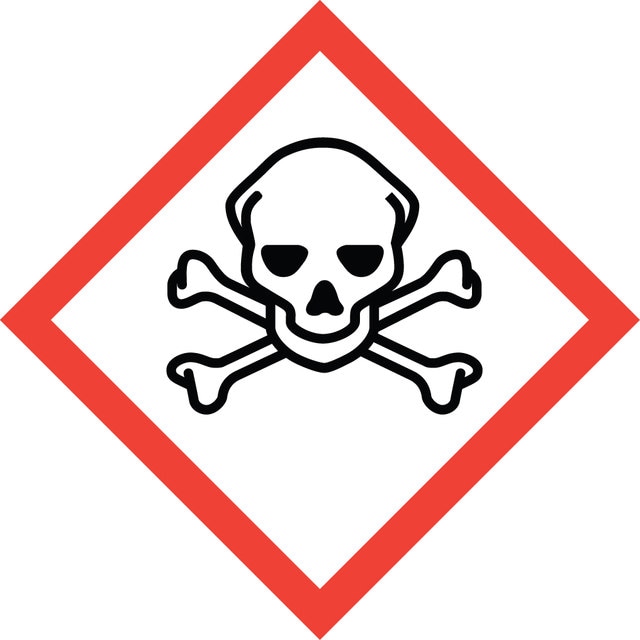Sign In to View Organizational & Contract Pricing
Select a Size
About This Item
Linear Formula:
H2PtCl6 · xH2O
CAS Number:
Molecular Weight:
409.81 (anhydrous basis)
EC Number:
MDL number:
UNSPSC Code:
12161600
PubChem Substance ID:
NACRES:
NA.23
Quality Level
Assay
≥99.9% trace metals basis
composition
Pt, 37-40%
mp
60 °C (lit.)
density
2.43 g/mL at 25 °C (lit.)
SMILES string
O.Cl.Cl.Cl[Pt](Cl)(Cl)Cl
InChI
1S/6ClH.H2O.Pt/h6*1H;1H2;/q;;;;;;;+4/p-4
InChI key
SLIOYUPLNYLSSR-UHFFFAOYSA-J
Looking for similar products? Visit Product Comparison Guide
Related Categories
General description
Chloroplatinic acid hydrate is the most readily available compound of platinum. It may be prepared by dissolving platinum in aqua regia. Thermogravimetric analysis of this compound has been reported. The analysis shows the loss of water followed by formation of platinum tetrachloride (PtCl4) at 220 °C and β-PtCl2 at 350 °C finally decomposing to platinum metal at 500 °C.
Application
Chloroplatinic acid hydrate may be used:
- in the determination of potassium, by selective precipitation as potassium chloroplatinate.
- in the purification of platinum.
- In catalysis during the addition of silicon hydrides to olefinic double bonds and in platinum-catalyzed hydrosilylation of alkynes.
Preparation Note
1. Hygroscopic material, always handle in a glove bag or a glove box filled with dry inert gas
2. Recommended for one time use to prevent water absorption and degradation. If necessary, once opened, repack and seal under dry inert gas.
3. Store with care. Prevent from light. Always store in well-sealed containers in a dry inert atmosphere. Recommended to store containers in a secondary desiccator with desiccant in a dry inert atmosphere.
2. Recommended for one time use to prevent water absorption and degradation. If necessary, once opened, repack and seal under dry inert gas.
3. Store with care. Prevent from light. Always store in well-sealed containers in a dry inert atmosphere. Recommended to store containers in a secondary desiccator with desiccant in a dry inert atmosphere.
Signal Word
Danger
Hazard Statements
Precautionary Statements
Hazard Classifications
Acute Tox. 3 Oral - Eye Dam. 1 - Resp. Sens. 1 - Skin Corr. 1B - Skin Sens. 1
Storage Class Code
6.1C - Combustible acute toxic Cat.3 / toxic compounds or compounds which causing chronic effects
WGK
WGK 1
Flash Point(F)
Not applicable
Flash Point(C)
Not applicable
Personal Protective Equipment
dust mask type N95 (US), Eyeshields, Gloves
Regulatory Information
危险化学品
This item has
Choose from one of the most recent versions:
Already Own This Product?
Find documentation for the products that you have recently purchased in the Document Library.
The Separation and Determination of the Alkali Metals Using Perchloric Acid. V. Perchloric Acid and Chloroplatinic Acid in the Determination of Small Amounts of Potassium in the Presence of Large Amounts of Sodium
Smith GF and Gring JL
Journal of the American Chemical Society, 55(10), 3957-3961 (1933)
The Addition of Silicon Hydrides to Olefinic Double Bonds. Part II. The Use of Group VIII Metal Catalysts
Speir JL, et al.
Journal of the American Chemical Society, 79(4), 974-979 (1957)
SA Cotton
Chemistry of Precious Metals null
The Addition of Silicon Hydrides to Olefinic Double Bonds. Part III. The Addition to Non-terminal Olefins in the Presence of Chloroplatinic Acid
Saam JC and Speier JL
Journal of the American Chemical Society, 80(15), 4104-4106 (1958)
Ricardo M Santos et al.
eLife, 10 (2021-02-16)
Cholinergic fast time-scale modulation of cortical physiology is critical for cognition, but direct local measurement of neuromodulators in vivo is challenging. Choline oxidase (ChOx)-based electrochemical biosensors have been used to capture fast cholinergic signals in behaving animals. However, these transients
Our team of scientists has experience in all areas of research including Life Science, Material Science, Chemical Synthesis, Chromatography, Analytical and many others.
Contact Technical Service

